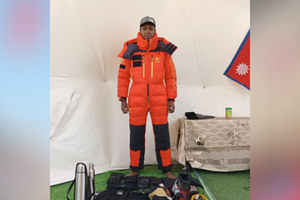Breaking News: Former Lugari MP Cyrus Jirongo dies in a road crash
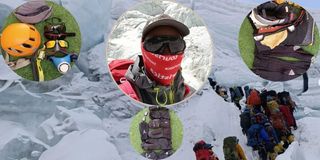
Late Cheruiyot Kirui had elaborate plans for his daring expedition, which he shared with his fans on social media.
When Kenyan mountaineer Cheruiyot Kirui set off to summit Mount Everest without supplemental oxygen in April, he was well aware of the risks he was taking, particularly his susceptibility to frostbite and the life-threatening altitude illnesses HAPE and HACE.
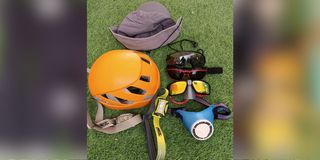
"A no-oxygen attempt comes with its special preparations and risks, physically my body is ready. On the other risks, I'm taking the following measures," he had said.
A banker by profession, Kirui was upbeat as he embarked on his gruelling expedition to the summit of the world's highest mountain above sea level, judging by his updates on social media sites. He was confident that he would make it.
Sadly, as fate would have it, he didn't.
The Chebisaas High School alumnus died just as he was about to embark on his final mission to reach the summit. His body was discovered a few metres below the summit, a day after he and his guide were reported missing.
Kirui had an elaborate plan for his daring expedition, which he shared with his fans on social media.
On his Instagram page, he wrote that after 10 days at base camp, his plan to summit the mountain, which is located in the Mahalangur Himal sub-range of the Himalayas at an altitude of 8,848.86m, was a no-oxygen attempt.
A no-oxygen attempt involves special preparations and risks, he had realised when he started his journey in April. Physically, he was convinced that his body was ready.
He was all too aware of the other risk factors of the expedition, which was to last more than a month, including how to deal with the cold, medication and emergency oxygen. He shared his journey on his Instagram and Facebook pages, updating every step of the way.
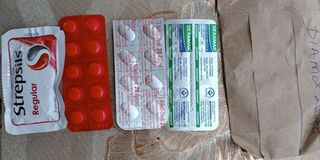
Medically, he was armed with nifedipine, and he revealed in his plan that this was because he was susceptible to High Altitude Pulmonary Edema (HAPE), a serious high altitude illness that affects the lungs and causes them to fill with fluid, which could lead to a medical emergency.
However, his social media pages haven't been active for the last five days.
All in all, it was a big physical, mental and time investment for the 8-5 banker.
As for the cold, he was aware, and noted on his social media pages, that without oxygen you are much more susceptible to frostbite. He had equipped himself with a pair of heated gloves, a pair of heated mittens with a spare set of batteries, and two pairs of heated socks with a spare set of batteries.
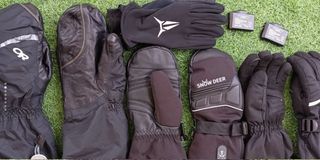
Cheuiyot Kirui had equipped himself with a pair of heated gloves, a pair of heated mittens with a spare set of batteries, and two pairs of heated socks with a spare set of batteries.
Medically, he was armed with nifedipine, and he revealed in his plan that this was because he was susceptible to High Altitude Pulmonary Edema (HAPE), a serious high altitude illness that affects the lungs and causes them to fill with fluid, which could lead to a medical emergency.
Edema is swelling caused by too much fluid trapped in the body's tissues, and HAPE typically occurs in lowlanders who rapidly ascend to altitudes above 2500-3000m.
For High Altitude Cerebral Edema (HACE), a life-threatening altitude sickness that causes brain swelling, he was armed with dexamethasone and acetazolamide, having learned from a previous episode of HAPE and no medication, he revealed.
HACE is a severe and potentially fatal manifestation of altitude illness, often characterised by ataxia, fatigue and altered mental status, and is often an extreme form/end stage of acute mountain sickness (AMS).
For emergency oxygen, Nawang Sherpa, now missing, would carry an emergency oxygen bottle to be used.
“If I go lights out or if I go bananas, if I am time-barred, unfavourable weather, body limit reached when I realise I am no Superman. Traffic jam. I’d planned to climb from the Tibet/North side to avoid traffic, but here we are, hopefully, we get to avoid it,” he wrote on his page.
Financially, he revealed the huge costs involved in making the expedition happen, joking: “The amount of zeros needed to make this happen means I declare bankruptcy immediately I land back in Kenya… it's not the moment of truth…As usual, we convene here in a few days to see how things will have turned out," he wrote.
In communication with this writer, he had promised to narrate every step he took while trying to reach the summit, including taking photos.
“I am getting to the basecamp today on route as we speak and definitely I will take photos though not professional ones so that we can document this when I reach at the top,” he wrote to the writer.
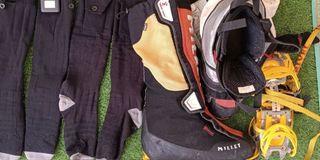
For his feet, he had two pairs of heated socks with a spare set of batteries.
Kirui was reported missing after he and his guide, Nawang Sherpa, lost contact with Bishop Rock. Rescuers from Seven Summit Treks found his body a few metres below the summit of Mt Everest base camp.
According to the Himalayan, Nawang's last communication with base camp officials at Bishop Rock was that Kirui had refused to return or consume bottled oxygen and was behaving abnormally.
His schoolmate at Chebisaas High School schoolmate, Shadrack Mwirotsi, said he used to meet Cheruiyot when he went for the ultra-challenges, which are usually more than the usual 42km.
Mwirotsi revealed that he never came for the normal half or full marathons, revealing that he loved the thrill of extreme outdoor adventures.
"I remember meeting him at the Kericho Ultra where we challenged ourselves to do 50km. I was new to it so I did 30km and he did 50km and came first. He loved his White Cap (lager) after his efforts. He was a great guy. I really think he understood the task and the risks involved," said Mwirotsi.

